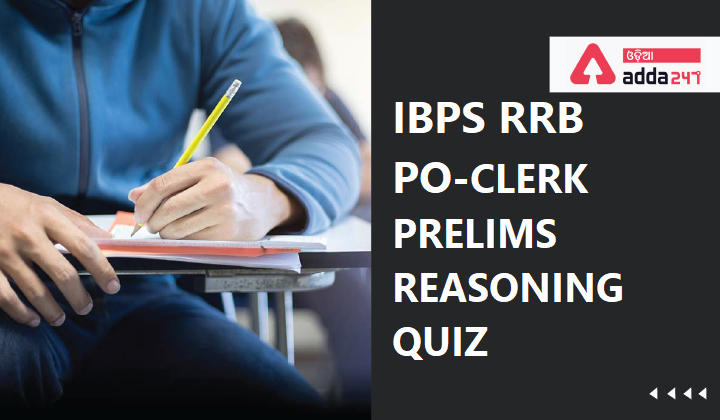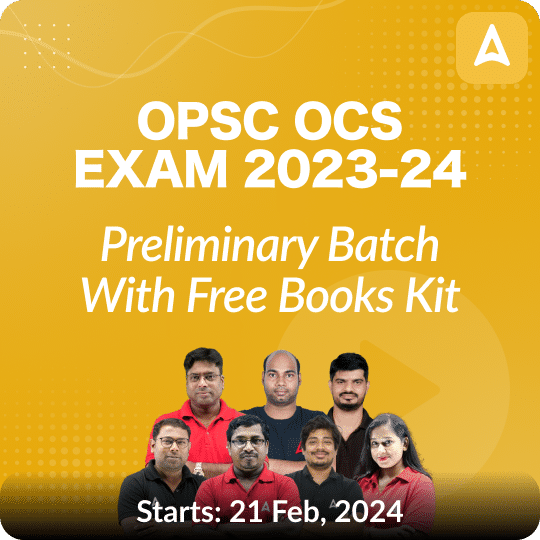Reasoning MCQs and Answers: Reasoning MCQs are very important for IBPS RRB PO-Clerk Prelims & Other State Exams. Aspirants who are willing to apply for the various Government exams 2022 must go through the topics of Reasoning for competitive exams, as the Reasoning is a key part of the syllabus.
Direction (1-15): In the following questions, a statement/s is/are given followed by some conclusions. Study the following data carefully and answer the questions accordingly.
Q1. Statements: X = Y ≥ E > F > G > H > I, F < Z ≤ T
Conclusions: I. X < G
- Z > Y
(a) If only conclusion I follows
(b) If only conclusion II follows
(c) If either conclusion I or II follows
(d) If neither conclusion I nor II follows
(e) If both conclusions I and II follows
Q2. Statements: P < F ≤ T < V = Q, S ≥ U > T
Conclusions: I. F < S
- T > P
(a) If only conclusion I follows
(b) If only conclusion II follows
(c) If either conclusion I or II follows
(d) If neither conclusion I nor II follows
(e) If both conclusions I and II follows
Download ADDA247 Odia APP – Appear Latest Exam Test Series & Live Classes
Q3. Statements: Y ≥ L < T = Q > U, K ≤ C < L
Conclusions: I. Q > L
- K < Y
(a) If only conclusion I follows
(b) If only conclusion II follows
(c) If either conclusion I or II follows
(d) If neither conclusion I nor II follows
(e) If both conclusions I and II follows
Q4. Statements: R > K ≤ T < M, M ≤ J = Q > S
Conclusions: I. R > M
- S > T
(a) If only conclusion I follows
(b) If only conclusion II follows
(c) If either conclusion I or II follows
(d) If neither conclusion I nor II follows
(e) If both conclusions I and II follows
Q5. Statement: A ≥ T ≥ S = D ≥ Q
Conclusions: I. A > Q
- Q = A
(a) If only conclusion I follows
(b) If only conclusion II follows
(c) If either conclusion I or II follows
(d) If neither conclusion I nor II follows
(e) If both conclusions I and II follows
Q6. Statements: R = T ≥ V; P ≤ W ≤ R = S ≤ Y
Conclusions: I. W ≤ T
- Y = R
(a) If only conclusion I follows
(b) If only conclusion II follows
(c) If either conclusion I or II follows
(d) If neither conclusion I nor II follows
(e) If both conclusions I and II follows
Q7. Statements: P = N ≥ J > T, C = Z ≥ X >P< K > R
Conclusions: I. P> T
- J < X
(a) If only conclusion I follows
(b) If only conclusion II follows
(c) If either conclusion I or II follows
(d) If neither conclusion I nor II follows
(e) If both conclusions I and II follows
Q8. Statements: E > X < O = N ≥ F ≥ U < D = Q > V ≥ Y
Conclusions: I. U> X
- E ≥ Q
(a) If only conclusion I follows
(b) If only conclusion II follows
(c) If either conclusion I or II follows
(d) If neither conclusion I nor II follows
(e) If both conclusions I and II follows
Q9. Statements: T ≥ I > V= Z > K ≤ H > C < G, M ≥ E ≥ H
Conclusions: I. M > K
- M = K
(a) If only conclusion I follows
(b) If only conclusion II follows
(c) If either conclusion I or II follows
(d) If neither conclusion I nor II follows
(e) If both conclusions I and II follows
Q10. Statements: H > P > S ≥ I= F > X, V ≥ T > W = D ≥ H
Conclusions: I. I ≤ H
- S < W
(a) If only conclusion I follows
(b) If only conclusion II follows
(c) If either conclusion I or II follows
(d) If neither conclusion I nor II follows
(e) If both conclusions I and II follows
Q11. Statements: A > L ≥ C ≥ T, E = F > S, S = A
Conclusions: I. S > L
II.C > T
(a) If only conclusion I follows
(b) If only conclusion II follows
(c) If either conclusion I or II follows
(d) If neither conclusion I nor II follows
(e) If both conclusions I and II follows
Q12. Statements: Y > T ≥ C ≥ D, E = U > G, G = Y
Conclusions: I. U > Y
- T > U
(a) If only conclusion I follows
(b) If only conclusion II follows
(c) If either conclusion I or II follows
(d) If neither conclusion I nor II follows
(e) If both conclusions I and II follows
Q13. Statements: K ≤ L > M, Y = O ≥ R, K > Q > Y
Conclusions: I. Y ≥ R
- Y > R
(a) If only conclusion I follows
(b) If only conclusion II follows
(c) If either conclusion I or II follows
(d) If neither conclusion I nor II follows
(e) If both conclusions I and II follows
Q14. Statements: F ≤ L > T, N = O ≥ P, F > Q > S
Conclusions: I. L > T
- F > S
(a) If only conclusion I follows
(b) If only conclusion II follows
(c) If either conclusion I or II follows
(d) If neither conclusion I nor II follows
(e) If both conclusions I and II follows
Q15. Statements: X > Y ≥ Z ≥ W, E = F > H, H = A
Conclusions: I. Y = W
- Y > W
(a) If only conclusion I follows
(b) If only conclusion II follows
(c) If either conclusion I or II follows
(d) If neither conclusion I nor II follows
(e) If both conclusions I and II follows

SOLUTIONS
Solution (1-15):
S1. Ans.(d)
Sol.I. X < G – False
- Z > Y – False
S2. Ans.(e)
Sol. I. F < S – True
- T > P – True
S3. Ans.(e)
Sol.I. Q > L – True
- K < Y – True
S4. Ans.(d)
Sol. I. R > M – False
- S > T – False
S5. Ans.(c)
Sol. I. A > Q – False
- Q = A – False
S6. Ans.(a)
Sol. I. W ≤ T – True
- Y = R – False
S7. Ans.(e)
Sol.I. P> T – True
- J < X – True
S8. Ans.(d)
Sol.I. U> X – False
- E ≥ Q – False
S9. Ans.(c)
Sol.I. M > K – False
- M = K – False
S10. Ans.(b)
Sol.I. I ≤ H – False
- S < W – True
S11. Ans.(a)
Sol.I. S > L – True
II.C > T – False
S12. Ans.(a)
Sol. I. U > Y – True
- T > U – False
S13. Ans.(a)
Sol.I. Y ≥ R – True
- Y > R – False
S14. Ans.(e)
Sol. I. L > T – True
- F > S – True
S15. Ans.(c)
Sol. I. Y = W – False
- Y > W – False
Read More














